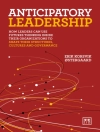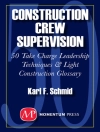In the
Handbook of Workplace Violence, editors E. Kevin Kelloway, Julian Barling, and Joseph J. Hurrell Jr. bring together the contributions of leading researchers to provide summaries and unique perspectives on current theory, research, and practice relating to workplace violence. This is the most up-to-date resource available providing a comprehensive overview of the current state of knowledge regarding all aspects of workplace violence and aggression.
Part I summarizes the leading theoretical perspectives on violence and aggression and provides prevalence estimates for aggression and violence in North American workplaces.
Part II focuses on leading experts in the field summarizing what is known about the sources of workplace violence (e.g., partner violence, communal violence, industrial relations violence, public-initiated violence) forms of aggression in the workplace (e.g., emotional abuse, workplace bullying, cyber-aggression) and populations (e.g., occupations, youth) at special risk for workplace violence and aggression.
Part III considers the experience of victims as well as individual (e.g., critical incident stress debriefing) and organizational (e.g., selection, training) interventions designed to prevent, or ameliorate the consequences of workplace violence.
This is a valuable resource for researchers and practitioners in the fields of Industrial and Organizational Psychology, Human Resources, Health Psychology, Public Health, and Employee Assistance Programs. It is also an excellent textbook for graduate courses in Organizational Behavior, Occupational Health Psychology, and Organizational Psychology.
Spis treści
Part I. Perspectives on Workplace Violence
1.Editors’ Introduction to Part I
2.Violence as Instrumental Behavior – Richard B. Felson
3.Emotions, Violence, and Counterproductive Work Behaviors – Paul E. Spector, Suzy Fox, & Theresa Domagalski
4.Prevalence of Workplace Aggression in the U.S. Workforce: Findings from a National Study – Aaron C.H. Schat, Michael R. Frone, & E. Kevin Kelloway
Part II. Sources and Forms of Workplace Violence
5.Editors’ Introduction to Part II
6.Workplace Emotional Abuse – Loraleigh Keashly & Steve Harvey
7.Workplace Bullying – Charlotte Rayner & Cary L. Cooper
8. Violence in Nursing – Marilyn Lanza
9.School Violence – Irvin Sam Schonfeld
10. Workplace violence in the Police – Stephen B. Perrott & E. Kevin Kelloway
11.Crossing the Line: Violence on the Picket Line – Lori Francis, James E. Cameron, & E. Kevin Kelloway
12. Public Initiated Violence – Manon Mireille Le Blanc, Kathryn E. Dupre, & Julian Barling
13.The battlefield as workplace: Violence in Warfighting – Kelly M.J. Farley & Victor M. Catano
14.Violence in peacekeeping – Michelle Innes & Julian Barling
15.Community Sources of Workplace Violence – Joerg Dietz & Harjinder Gill
16.The Consequences of Partner Violence on Employment and the Workplace – Jennifer E. Swanberg, TK Logan & Caroline Macke
17.Sexual Harassment in the Workplace: A look Back and a Look Ahead – Collette Arens Bates, Lynn Bowes-Sperry, & Anne M. O’Leary-Kelly
18. Young Workers – Sean Tucker and Catherine Loughlin
19. A Case of Cyberdeviancy: Cyber Aggression in the Workplace – Terrance Weatherbee and E. Kevin Kelloway
Part III. Prevention and Intervention
20.Editors’ Introduction to Part III
21.Organizational Response to Workplace Violence – Elizabeth Kelley & Jane Mullen
22.The Experience of Victims: Using Theories of Traumatic and Chronic Stress to Understand Individual Outcomes of Workplace Abuse – Theresa M. Glomb & Lilia M. Cortina
23.Critical Incident Stress Debriefing and Workplace Violence – Joseph J. Hurrell Jr
24.Screening and Selecting out Violent Employees – Arla L. Day & Victor M. Catano
25.Training as a Workplace Aggression Intervention Strategy – Aaron C.H. Schat & E. Kevin Kelloway
26. Preventing Insider-initiated Workplace Violence – M. Sandy Hershcovis & Julian Barling
Index
About the Editors
About the Contributors
O autorze
Joseph J. Hurrell is Associate Director for Science, Division of Surveillance Hazard Evaluations and Field Studies (DSHEFS), National Institute for Occupational Safety and Health (NIOSH, CDC), Robert A. Taft Laboratories. NIOSH, an Institute within the Centers for Disease Control (CDC), performs research on the causes of occupational illnesses and injuries. DSHEFS is one of the largest Divisions of NIOSH, CDC. Dr. Hurrell is also Adjunct Professor of Psychology, Department of Psychology, Xavier University, Cincinnati, Ohio. He has co-authored and co-edited eight books on occupational health psychology. Dr. Hurrell is Associate Editor, Occupational Health Psychology and is the author of numerous articles published in refereed journals.












